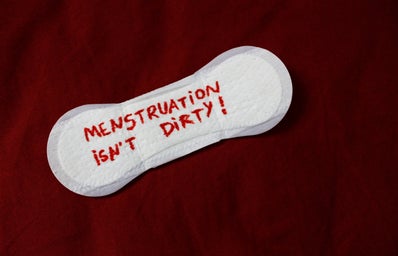Understanding your Cycle
Have you ever noticed that during certain weeks of a month you feel different? When I say different, I mean; you will be more energetic one week but then exhausted the next. Or there are times when you think you look your best, but then suddenly, your self-confidence is shattered. Yes, that happens to us all. And there is an explanation for that.
Until recently I thought women only had two phases during the month: her ovulation phase and her menstrual phase. But there are two others which you may not be familiar with.
During each month, a woman has a cycle which consists of the follicular phase, the ovulation phase, the luteal phase, and of course the menstruation phase. Lately, I have been interested in how each of these phases change the way we look and feel, and I wanted to share this with you. So, let us begin:
The Follicular Phase:
So, you have just started your period and you are now about the enter what can be referred to as your ‘inner spring.’ The follicular phase is where you start to blossom. Energy levels rise, you feel more social, your skin glows, your face looks more symmetrical, and you feel good in your body. It’s a shame this has to end at some point, but on the bright side, this is the longest phase of your cycle. Lasting around 14 to 21 days. But why do we feel this way? As the follicular phase progresses, oestrogen begins to rise. If we’re getting scientific… oestrogen is a group of hormones which are responsible for developing the follicle that contains the egg. As oestrogen increases, so do our serotonin levels (the happy chemical in our brains.) However, even though this phase starts on day 1 of your period, you won’t feel the positive effects straight away. So, if you feel completely blegh on your period, don’t worry, you will begin to feel better!
The Ovulation Phase:
The ovulation phase (your ‘inner summer’) is when a mature egg is released from an ovary, awaiting to be fertilised. It is during this time where pregnancy can happen – as sperm can live inside your body for around 5 days. Ovulation only lasts a day, after which the egg will dissolve if not fertilised. Yet, you may have some signs of ovulation for around a week. These being, discharge which resembles the texture of egg whites (how lovely), appetite changes, and a big one, a high sex drive – this is due to the body’s biological desire to reproduce. During this time, oestrogen levels are high, and you feel more confident and assertive.
The Luteal Phase:
After ovulation, it’s time to enter your ‘inner autumn.’ The luteal phase lasts until you begin your period, and it’s probably when you feel your worst. During this time progesterone increases to prepare the uterus lining for a possible pregnancy. However, if no egg is fertilised, there is a decline of progesterone and oestrogen as your body prepares to shed the uterus lining. Serotonin also dips with the fall of oestrogen. That is why during your luteal phase your mood will change and you will feel exhausted. I know I do. I will wake up in the morning still feeling tired. You will also have an intense craving for sugar and carbs. The reason for this is that sugar and carb-packed foods like chocolate and bread have links to boosting serotonin levels. And since the decrease of oestrogen has affected those serotonin levels, your body desires to get them from somewhere else. At this time, you may also notice you have a lot more breakouts on your face. That is because the increase of progesterone causes the oil glands to produce more sebum than usual. Also, do you notice your body looks different during this time too? That is because oestrogen and progesterone help control the way your body regulates fluid. But when these hormones fluctuate during the luteal phase, your body accumulates more water, causing puffiness in your face, tender breasts, and bloating. This part of the cycle is evil.
The Menstruation Phase:
And finally, the menstruation phase, also known as your ‘inner winter.’ The menstruation phase, more commonly known as your period, is where the lining of the uterus sheds if not needed for pregnancy. You will release a combination of blood, mucus, and tissue from the uterus through your vagina. During this time, you may experience some cramping (maybe quite severely), bloating, irritability, headaches, and even some lower back pain. Your period can last anywhere from 2 to 7 days. If yours only lasts 2 days, then I am extremely jealous. Also, a little not-so-fun fact, a woman typically loses around 20 to 90ml of blood on her period. That is just an average and not the same for everyone.
So, there you are, the cycle of women, things that we must deal with every month for around 40 years. Doesn’t that just make you want to jump with joy? On a more serious note, I hope this has helped you understand your body a little bit more – and of course, if you have any concerns please contact a medical professional. And even if you do not experience the menstrual cycle, I hope you learned something that you maybe didn’t already know.


